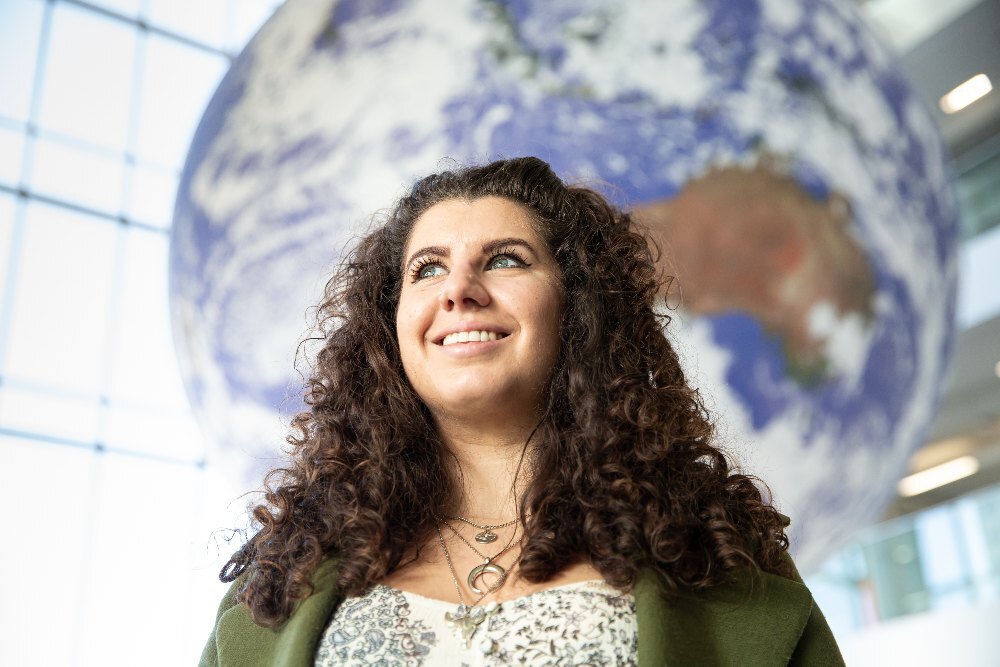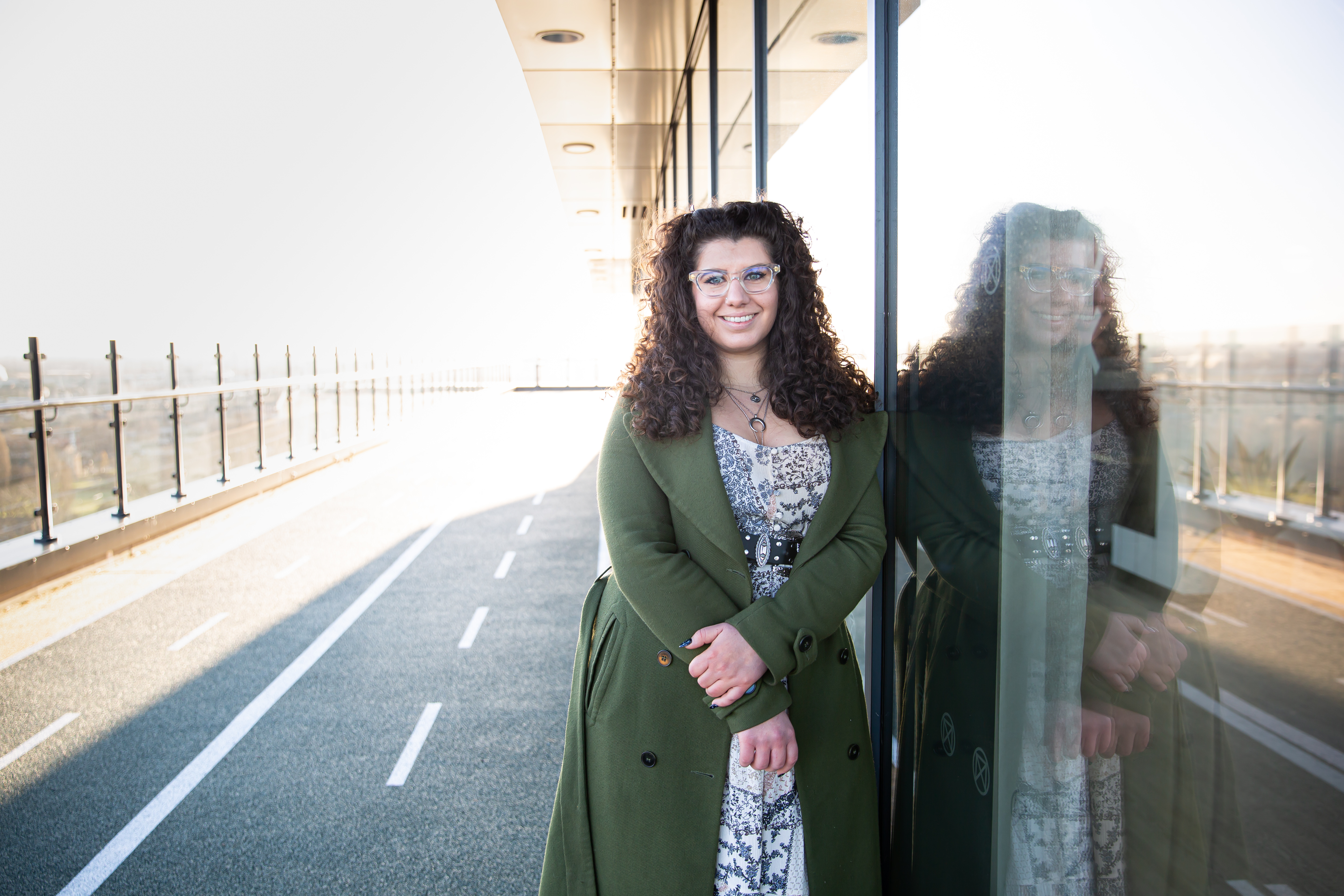Manchester @ UKREiiF Interview: Hydrock on smart energy and building a greener future
Hear from Leah Holmes, Associate Director, Smart Energy and Sustainability at Hydrock, now Stantec, a Manchester @ UKREiiF Partner about the future of our energy supplies and their role in building more sustainable communities.
Next week property professionals will gather in Leeds to discuss the biggest topics and challenges facing the industry at UKREiiF (The UK's Real Estate Investment & Infrastructure Forum). As we all know, sustainability and creating greener communities will play a vital role in the future of the built environment as we work to become climate resilient and switch to alternative energy sources.
As sustainability and smart energy are key talking points at UKREiiF 2024, we sat down with Leah Holmes, Associate Director, Smart Energy and Sustainability at Hydrock, now Stantec, to discuss her presence on the panel “The Greenfield Debate; Doing it Right” at the conference.
Below, Leah shares some insights around greenfield development, pressures on our current energy infrastructure and how the public and private sector can work together to tackle these issues within the built environment.

Why are Hydrock attending UKREiiF and what do you hope to achieve from the event?
Hydrock, now Stantec, attends UKREiIF every year. As an integrated engineering design, energy and sustainability consultancy, we want to make sure that we’re educating people about the solutions that help create long term inclusive, resilient and sustainable communities.
My mission is to make sure sustainability isn't just an afterthought – it's the driving force behind everything we do. But let's be honest, going green comes with its fair share of hurdles. I want to make sure we're equipped to handle those challenges.
You’ll be speaking on a panel about The Greenfield Debate at UKREiiF, is greenfield development the secret to creating sustainable communities?
I don't think it's the secret as such, but it does present the best opportunity. To enable masterplanning with sustainability at the forefront which is weaved through the design of the development, we must set the tone from project inception. There are many challenges with brownfield development and retrofit, as you can't take a fresh look at the site. Whereas with greenfield, you can treat it as a clean slate and set a sustainability-driven blueprint from the outset.
There's so much you could do for sustainability just in the masterplanning stage of a greenfield site that you can take through, like utilising its natural advantages and resources. Something as simple as development massing and orientation to achieve the best solar gains, to establishing opportunities in the ground for geothermal energy that can become a renewable heat source. These are all great opportunities for greenfield with a clean slate approach. It also means that you can benefit from the newer technologies, which have been purposefully developed over the last, 10 or 20 years to support a more sustainable future, such as smart microgrids.
How can regions like Greater Manchester with large urban populations build greener and more durable places?
Specifically from an energy perspective, if we're talking about greener energy and renewable energy, in urban populations, you can think a lot about the below-ground opportunities, and using the resources that we already have in the region.
We’ve just completed an options appraisal study with Manchester City Council looking at renewable energy sources and district heating networks around the city centre. They exist already within the city, but we’ve been looking at how they can feed into potential heat networks for new communities or regeneration.
In Manchester, with all the skyscrapers, there's not much rooftop space for solar panels. Plus, wind turbines wouldn't exactly fit-in with the densely populated urban context. So you have to look at the other engineering options that are potentially below-ground, or other sources such as ambient water from the city’s rivers.
For example, as the city is rich in mining infrastructure, and because the geology is right, geothermal heat presents a very tangible opportunity to be part of Manchester’s net zero solution.
What’s also really interesting is how you can produce heat from sewage, which is applicable to Manchester even though there isn’t a sewage works nearby. The closer to the ‘source’ the better opportunity for heat extraction – so, in this case, actually using the sewage sludge directly discharged from high density buildings to generate electricity.
Taking a holistic view of systems and technology, all these heat sources can be used in combination, and re-enforced with storage solutions, to create long-term energy resilience.

Energy sources play a huge part in helping us create more resilient communities. How will the desire to create sustainable communities impact our energy and power supplies?
>our>
Here's one thing that people don’t realise: we can generate gigawatts of renewable energy, but it can't get where it needs to go. Old and not up to scratch, our grid is clogged with generators and demand customers waiting to connect — essentially a huge queue for power. This means some renewable projects might be stuck in a queue until the 2030s before they can actually feed power into the system through the transmission or distribution network.
And how does that problem affect Greater Manchester’s transition to renewables?
In the North West specifically, there's a massive amount of power generation – 65 gigawatts worth – waiting to connect to the grid. That number might not mean much, but here's the problem: to handle all that power, the grid needs upgrades too. But … there’s always a but … there's already a long line of renewable energy projects and grid improvement plans waiting their turn, with some not expected to finish until 2028. So, basically, no new connections can happen until then.
Even then, once those committed upgrades happen, the queue still exceeds the upgrades needed. That's triggering the need for a brand-new pylon network across from north Wales where all the generation comes in from offshore down to South Wales and across the North West.
You might not see giant pylons popping up everywhere, but trust me, we need them. The truth is, building them can be a political headache. There are always groups fighting against them with slogans like "Stop the Pylons," and people worry about spoiling the countryside. In my opinion, though, this infrastructure is absolutely essential. We need a capable grid to handle all the renewable energy we're generating. And honestly, the "visual blight" argument gets on my nerves a bit. Let me tell you what's a real eyesore: floods, droughts, and wildlife disappearing – all because of climate change, which we share responsibility for.
These factors are all impacting our energy and power supplies. It's just creating such a long queue and, in worse case scenarios, means some development can't go ahead even when it has all the best intentions for sustainable energy plans. It sends the wrong message as well, where even private developers, often labelled as solely motivated by commercial interest, are turning their backs on doing the right thing for the environment because they know they won't get a power connection.
How important is it for developers to consider onsite renewables and energy storage when planning development projects?
If developers and local authorities can take more control of their energy generation and be less reliant on the grid, it’s a win-win for everyone. Looking at your sites, and assessing whether there's an opportunity to generate your energy through solar, wind or below the ground, is going to decrease your reliance on needing this high-power connection from the grid. Especially, if you can incorporate energy storage facilities into the plan as well.
Imagine having your own mini (renewable) power plant across your site. That's the idea behind smart microgrids. It's not some brand-new tech, it’s really just a private utility network for your building or community. It uses solar panels, heat pumps, batteries and even EV chargers, and cleverly generates, stores, manages and distributes all that power on-site. So, you're not constantly sucking energy from, and relying on, the main grid.
That allows a bit more ownership for the developers or the local authority in operating that energy network. That means they can set the energy prices for the communities and residents, and that can create a lot of resilience against energy price fluctuations. That is not only going to be beneficial to the developers but communities and the end occupiers of those buildings.
How can local authorities support the energy transition and net zero, particularly on limited budgets?
I see this as threefold. Firstly, it's the setting of policies, strategies and plans. Particularly if we're talking about bigger infrastructure or community projects. Without the local authorities taking an early view of being able to put policy and strategies in place, whose responsibility is it to make sure that the new communities that we build are sustainable?
Local authorities have got a role to play to ensure that something is set in place for those developers to come along and design their schemes and take them forward, to be a facilitator. We know that Greater Manchester Combined Authority does have an environmental team that works around housing, and commercial buildings to direct that sustainability work and create a coherent approach across the different local authorities. For example, the Places for Everyone strategic framework has requirements around renewable energy in it. That helps shape the local plans for each borough.
Secondly, it's about identifying skills or helping with skills. In terms of decarbonisation, they can ensure that the right education and training facilities are available and direct that and fill those gaps.
The third element, and probably the most important, is the engagement with everyone. Local authorities have access to community organisations, charities, private sector partners and developers. They're the ones who can make sure that the people who need to be engaged are engaged. They can get access to the local communities and skills. They can get buy-in from the private sector. Where there are limited budgets in the public sector, they need the support of private sector funding.
-------------------------------------------------------------------
To hear more of Leah’s thoughts on Greenfield development, energy generation and sustainable futures, don’t miss “The Greenfield Debate; Doing it Right” at UKREiiF on the Places for Life Pavilion, Tuesday 21 May from 1:45 pm.
To chat with Hydrock, now Stantec, about their current projects and how they can support your development project, visit them at The Manchester Stand, The Canary throughout UKREiiF.
View more of the Manchester programme at UKREiiF here.